6-14-19
In This Land Nobody Knew How to Cry at the LAGFF
By Diane Sippl
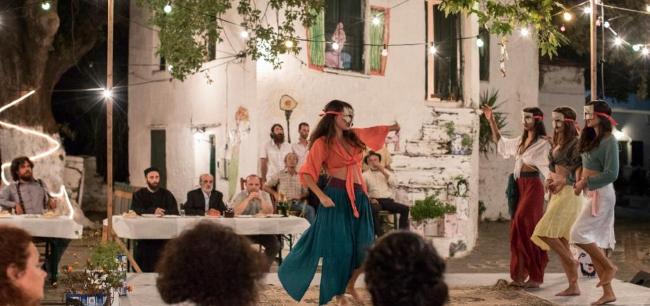
It has been… he saidOne state enchanted
One country with no prison
They lived together and united
It has been said….
Let him talk
It is because of his sadness
He has lost his mind
With no money at all and a lot of debts
Let him talk
It has been said…
It was wealthy people, empty-pocket people, all mixed
And they were singing from night ‘til morning
In this land nobody knew how to cry
It has been said
Among the many delights of the 13th Los Angeles Greek Film Festival with five nights under the palms in Hollywood following an opening at UCLA—with feature films, shorts, documentaries, and animation, Greek food, music, and wine—an unforgettable work of cinema screened on a balmy June afternoon.
Imagine being transported to a wondrous island where people live freely and sensually, enjoying the best of nature, the elements, and each other. The shimmering light rocks you softly in a cradle of waves with a lullaby from the sea. You are bathed in kindness and trust, and the breeze carries a generosity of spirit. You live a long, full life, begging for naught, thirsting only for the next day, its joys, its gentle rewards.
Writer-director Giorgos Panousopoulos takes you there in his new film, In This Land Nobody Knew How to Cry, delivering you from the pressures of a team of investment consultants from Europe who arrive to “rescue” such islanders, whom they presume are few and elderly, not to mention lazy, unless they are refugees from Syria and Afghanistan. The French official, Felix (Serge Requet-Barville), and his Assistant, Aura (Margarita Panousopoulou) plan to remove the residents to bigger islands so that development projects can be carried out here and preparations can be made for potential buyers, despite the fact that the Turks, who already fish here illegally, may move in to occupy the land. What happens when the foreigners meet two locals, the widow Chryssa (Foteini Tsakiri) and the teacher, Vitorio (Babis Chatzidakis), let alone an entire mountain of villagers, who seem to have found the elixir of happiness?
What follows is a dialogue with Giorgos Panousopoulos and his Director of Photography for the film, Cristos Karamanis, who explain the dreamscape of In This Land Nobody Knew How to Cry.
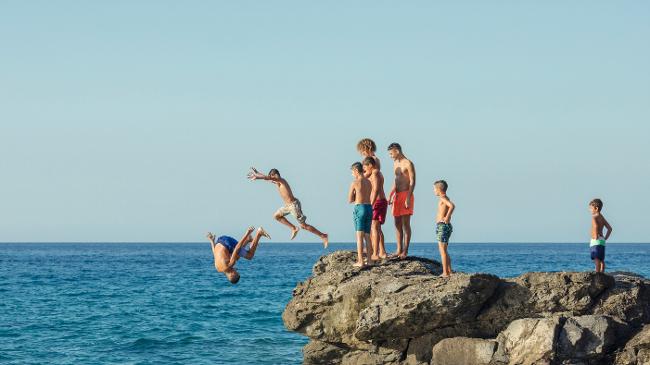
KINOCaviar How concerned were you with addressing the economic position of Greece these days, since it seems you have imagined and created an alternative society on the island of Armenaki?
Giorgos Panousopoulos I wanted to oppose to the suppressing situation that was created in Greece because of the economic crisis, and through the story of the film, to remind Greeks and Europeans that life is something other than money and depression, EU demands and loans. Life is joy, love and co-existence.
KC I don’t know Greek, so I can’t read the reactions of critics and audiences in your country. Do Greeks respond to the film by seeing it as any of the following?
A delightful fantasy of a utopia (old or new)
An irrelevant departure from a dire reality
A celebration of the five senses in which the Dionysian pleasures are fulfilled
An artistic work of pure cinema—sight and sound moving in space and time, at their best
A tribute to the national spirit and perseverance of Greece as a nation and as a culture
GP I am not following the critics, on the contrary. However, I had some info on their comments, which included the first and third reactions on your list.
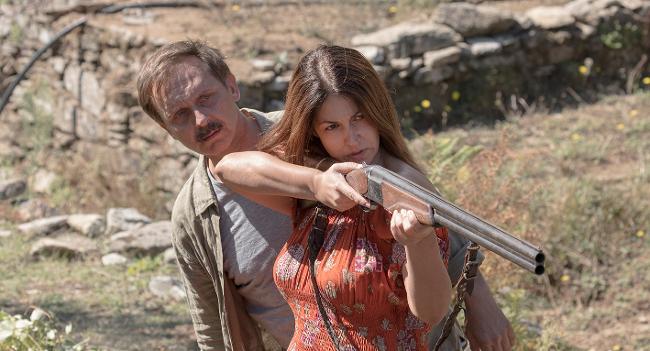
KC Do you consider this film to be working in the tradition of “magical realism” (such as Miracle in Milan by Vittorio De Sica, The Night of the Shooting Stars by Vittorio and Paolo Taviani, and Eréndira, by Ruy Guerra from Gabriel García Márquez)? Some elements these films share are:
An ensemble or community of local, everyday people who are not wealthy
Their ancient or syncretic or magical/superstitious folk beliefs
Their socio-economic and political needs as a struggling group (postwar, recession, coup)
Cinematic realism but wishful thinking coming to life
A lyrical/poetic film language and style
GP In this Land Nobody Knew How to Cry is an ensemble film of everyday characters living in conditions that they have created, which reach surrealism. The world of Armenaki, as we say, is a “nutopia,” meaning that all that is happening is only there. They are not poor; they are wealthy in their senses. They don’t need money; they had the bank, but they closed it. They live one for the other and at the same time each one for himself/herself. There is school all the year, equality between women and men, and no rooms to let but hospitality for foreigners in the residents’ own houses. There is no need for pensions—the young take care of the elderly. There are no cars, no streets, no courts, no police.
At the same time, they are not isolated; they have contact with the world through their giving of the “magic” water, through their chef who is traveling everywhere, and through the information they get from Katerinaki, the escort of Ms. Lego, the medium of the island, who is searching the Internet. They don’t deny the present. They keep the good of past and the present and move to the future.
Armenaki, the name of the island, has a special meaning. Armenizo, as a verb in Greek, means:
a) sailing in the sea with no specific direction;
b) “mind traveling,” moving with the wind, wandering freely, with no special purpose, just for the joy of the moment, but at the same time performing an action.
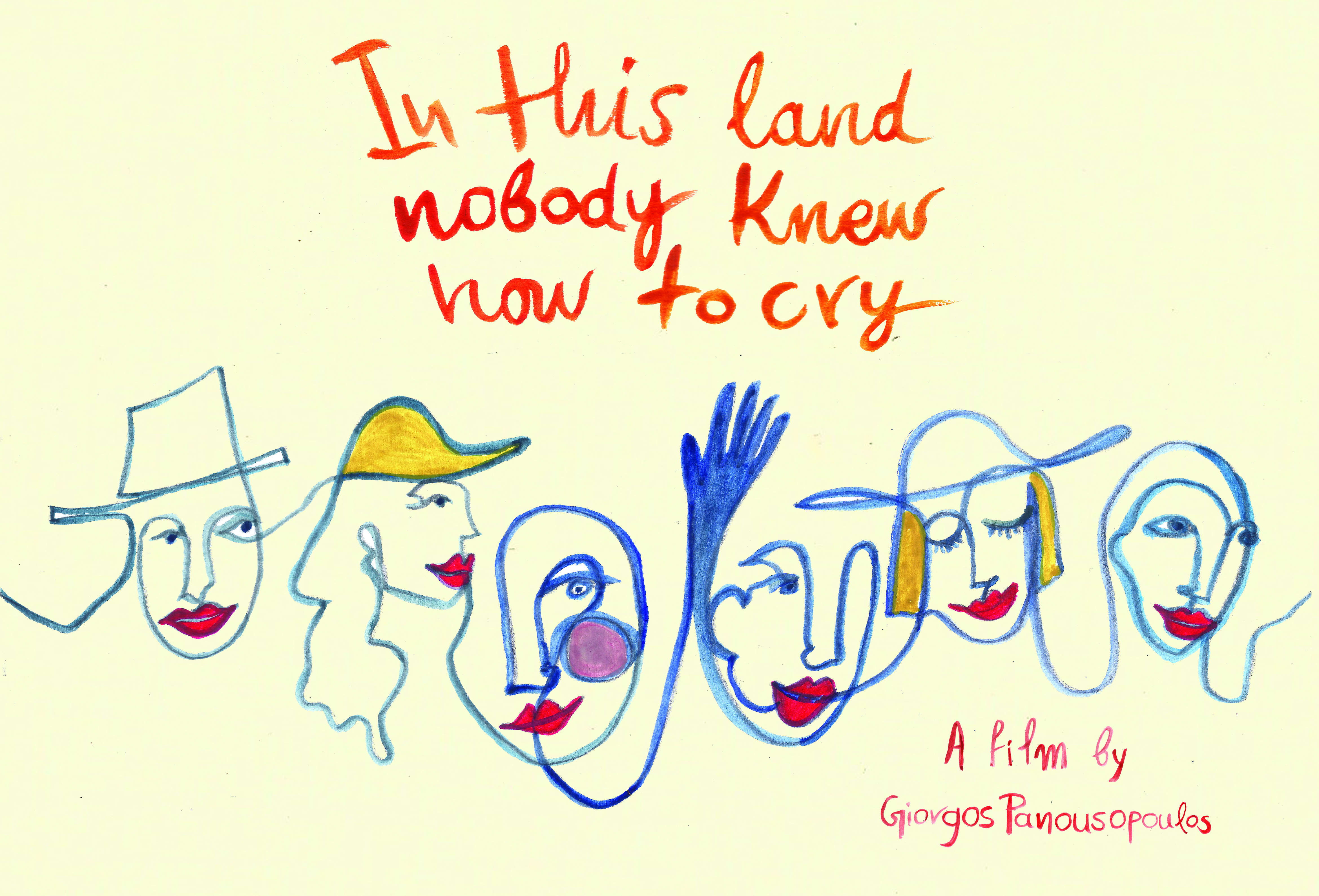
KC Who did the original and alluring drawings for the animation in the opening title sequence and the wall paintings during the film?
GP It’s Kyveli Zoi Stenou, a young woman whose father and mother are both Ikarian, who spends her time between Ikaria, Athens and New York, where she studied art. She is a visual artist and painter and also plays the tzouras, a stringed musical instrument. She cooperated with the set designer Spyros Laskaris and designed the wall paintings of the film in an A3 scale and then adapted them to the sizes needed for the various surfaces. She did the opening title sequence on the computer and painted all the sketches of the flower pots one by one; if I remember correctly, 50 pieces were needed. She is extremely talented.
KC How important was it to shoot “on location” and how did you choose the island of Ikaria? Did it present any particular challenges?
GP I always shoot on location, and particularly for this film, there was no other option. Going back to the pre-production stage, the scouting lasted almost two years. When we visited Ikaria for the first time and got into contact with some inhabitants, I knew that this was the place. I chose Ikaria because of its inhabitants and their own way of life, which on some levels is similar to the ideas referred to in the script. It was not the place, but the Ikarians themselves.
KC Is the leading female character, the economist Aura, played by your daughter, Margarita? She’s superb. Were very many people in the cast “locals” vs. “professional” actors? If so, what guided that choice?
GP I wanted to make a feature film that would be set up as a documentary. To work with actors and locals was a wish, a decision that I had in mind just from the first pages of the script—i.e., to blend the actors, Margarita and Serge (the representative of the European Parliament) with the non-actor inhabitants. The teacher, Babis, is an actor, but he is a foreigner, too, who came onto the island 10 years ago. The only exception is Chryssa, the widow; though she is a professional actress, she plays a local character.
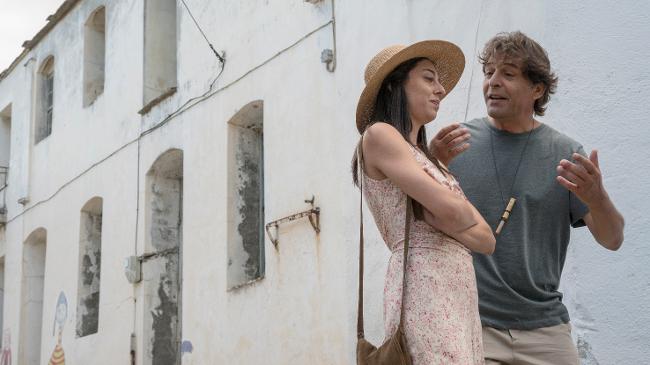
KC Is the title of the film a line from a song? Can you identify that song and some of the others? Are they folk songs of Ikaria? Greece? Are they old, or are some of them new popular songs? Were any written just for the film? What instruments were used in the music to make it special?
GP The tittle of the film is indeed a line from the song by Akis Panou, a composer of folk songs and a close friend of mine, who has passed away, with the title, “It has been, he said…” It is heard in the film during the opening credits. All the other songs that are heard in the film are rearrangements of folk songs of Ikaria and other Aegean islands by Vangelis Fampas. They were played live during the shooting of the film scenes.
There was music that was written for the film, not songs. The instruments that were used are:
Flute, Clarinet, Accordion, Guitar, Lyre, Gaida, Bagpipe, Lute, Violin, Percussions and Bouzouki, all played by great Greek musicians.
For me the whole procedure of creating a film is like constructing a ship, and the music is the wind that flows on the sails and gives the movement.
KC How did the cinematographer conceive of the lighting and achieve its sheer beauty in the film?
Christos Karamanis, Director of Photography Traveling with a ship in Aegean Sea, a long time before the pre-production of the film started, having read the script of the film, I was watching on a TV set in the salon of the ship a Greek movie of the '70s. It had the technicolor style. Those intense colors gave me the idea, and I decided on a marriage between them and the splendid Greek light of summer. It was my way of supporting Giorgos’ wish that time had stopped in Armenaki, the island of the film.
During our excellent cooperation (between the director, Giorgos Panousopoulos, who is my mentor, and myself), we chose the best hours, depending on the relevant locations, to shoot every scene of the film. A palette of intense and strong colors, in costumes and in scenography, completed the image, aiming to reach the initial idea.
KC Who is that “world-traveling chef” and how do I get his recipes? They were mouth-watering!
GP The world-traveling chef is a character I have put into the script because of my grandson, Kostas, a young chef who is indeed traveling the world collecting experiences, recipes, and life.
For the shoot we cooperated with an Ikarian chef, Nikos Politis, who operates a restaurant in Armenistis, in the northwest area of the island. The recipes in the film are his ideas.
KC Is there anything you’d like to add?
PG I have made a whimsical comedy. It is a film for laughter, joy, songs, music, love because life is more than just economics. I don't really propose what is said and presented in the film; these ideas are not solutions, they are jokes… just to laugh and maybe see our lives in the way we should. As in the lyrics of the song by Akis Panou that are heard over the opening titles for the film…. “Let him keep talking, he has lost his mind.”
KC Well, I sincerely thank you—the interview has been as much a pleasure as the film itself!
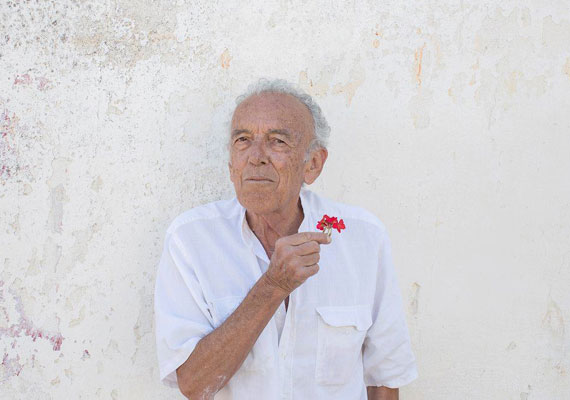
Giorgos Panousopoulos, prolific Greek cinematographer, film director, screenwriter, producer worked on 37 films between 1964 and 2004. His own film, Mania (1985) was entered into the 36th Berlin International Film Festival, and his film, Love Me Not? (1988) was entered into the 46th Venice International Film Festival.
In This Land Nobody Knew How to Cry
Director: Giorgos Panousopoulos; Producer: Eleni Kossyfidou; Screenplay: Giorgos Panousopoulos; Cinematographer: Christos Karamanis gsc; Editor: Nikos Vavouris; Sound: Wreck Ambience, Dario LeBars/Yiannis Skandamis; Art Director: Spyros Laskaris; Visual Artist: Kyveli Zoi Stenou; Costume Design: Mandalena Papadaki.
Cast: Margarita Panousopoulou, Babis Hatzidakis, Fotini Tsakiri, Serge Requet-Barville, Yannis Hajiyannis, Valeria Hristodoulidou, Stavros Mermigis, Elias Gianniris, Kostas Plakas, Petros Hambas.
Color, 90 min., Greek and English with English subtitles.